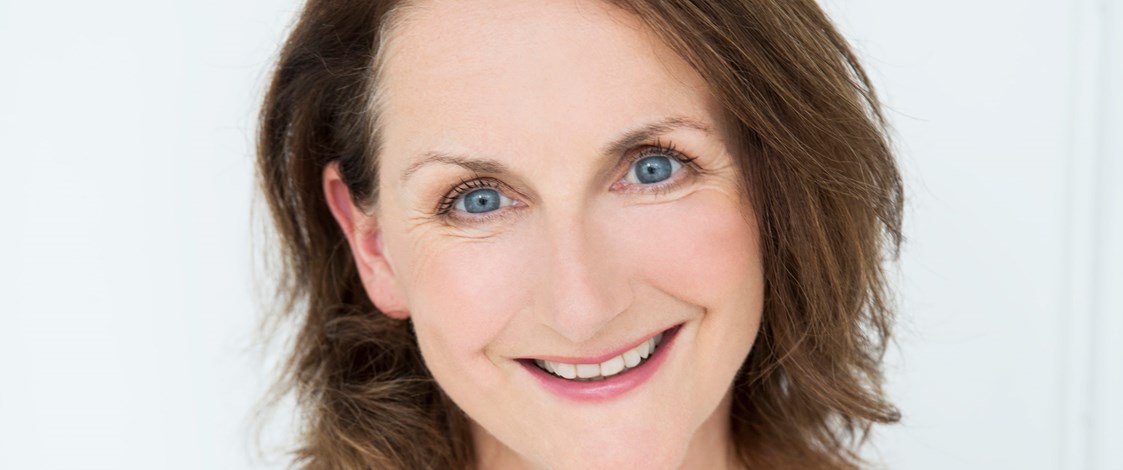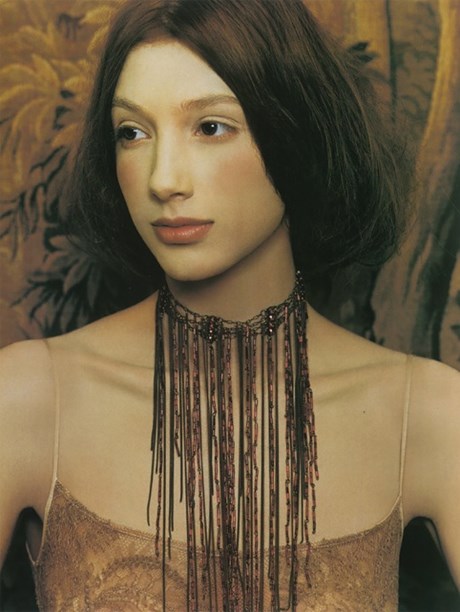Stories
Alice Rycroft

When English-born Alice Rycroft enrolled at London’s St Martin’s School of Art & Design, where she studied from 1980 until 1984, she didn’t have any particular career aspirations. She just wanted to work in the fashion business.
Among her fellow alumni were Hamish Bowles, now international editor-at-large for American Vogue, and soon-to-be-famous fashion designer John Galliano. "Compared to the rest of us, John’s work at college was very polished," she recalls. "For him there was no Plan B. He was totally focused on being a designer." As part of the degree course, Alice worked for a year with David and Elizabeth Emanuel, the husband and wife team commissioned to design the future Princess Diana’s wedding dress in 1981.
Alice’s graduation show was well-received. The influential London store Joseph bought her collection, prompting her to form a fashion label called Atom which subsequently sold to numerous other high profile stores such as Harrods, the British High Street chain Whistles, and Macys and Bloomingdales in New York.
Two years later, Alice closed the business and found her true vocation working as a freelance fashion stylist on UK magazines. "It was a relatively straight-forward transition," she explains. "As a designer I had contributed to i-D magazine and done my own promotional fashion shoots. I was also lucky to have had my clothes photographed many times by Nick Knight whose reputation for producing creative and technically brilliant images is legendary."
In 1988, Alice came to New Zealand for a holiday. She enjoyed the experience and decided to stay. Prior to establishing herself as a freelance fashion stylist, she was employed briefly as a designer/pattern maker at Thornton Hall.
Harking back to the late Eighties, she says being a fashion stylist-for-hire in New Zealand at that time was somewhat unusual. "Most people were unaware that fashion stylists existed. Basically, in Auckland, there were only three of us – Anna Caselberg, Julie Wyatt and me – and we were usually thought of as hairdressers."
Alice’s first break on New Zealand fashion magazines was given to her by Shona Jennings who edited More Fashion, a spin-off of More magazine and Fashion Quarterly’s main rival at the time. She did freelance fashion shoots for More Fashion, in New Zealand and in overseas locations, for a number of years before returning to London for a break. She had been back in the UK for a year when she was contacted by Paula Ryan at Fashion Quarterly and offered the position of full-time fashion editor.
Her Fashion Quarterly appointment in 1993 coincided with the craze for grunge and the renaissance of Seventies’ clothing. In her own inimitable fashion, Alice took the layers, crochet, flares, head-wraps, floppy hats and Biba-inspired print dresses and turned them into contemporary must-have items. Like former American Vogue creative director Grace Coddington, with whom she was often compared, Alice raised fashion styling to a new level. Her imagination and versatility knew no bounds She never tried to bend the looks to her own taste, bringing the same objectivity and flair to every shoot, irrespective of whether it was formal or fun, street-wise or glamorous. In addition to capturing the 'look', she says it was equally important to capture the mood of the moment. "I remember hanging a model off a cliff-face in a harness when the performance group De La Guardia was all the rage."
Alice’s fashion shoots often had a hint of nostalgia about them. She admits to a love of vintage fashion and to having been influenced, while studying at St Martin’s, by the New Romantics, the early Eighties’ fantasy fashion movement driven by London art school students, would-be designers and pop-stars. "When a theatrical costumier in Covent Garden announced he was closing down, we (the students) rushed in and bought all these romantic clothes from the past." Alice collects vintage evening bags and is the proud owner of a collection of 1950s’ shoes, inherited from her stylish grandmother, which she wears with modern pieces in her wardrobe.
Styling by Alice for Fashion Quarterly Winter 1995. Photographed by Paul Westlake on location in Sydney. Image © Fashion Quarterly.
The winter 1995 issue of Fashion Quarterly was Alice’s last for the magazine at this stage in her career.
She returned to Fashion Quarterly in 1999, working on that year’s autumn, winter, spring and summer editions before moving on to Cleo magazine where she spent the next two years.

Styling by Alice for Fashion Quarterly Winter 1999. Photographed by Martha Camarillo on location in Buenos Aires, Argentina. Image © Fashion Quarterly.
It was during her time as fashion editor of Cleo that Alice recollects doing one of her favourite shoots. "It took place at Whenuapai air-base and involved wrapping up planes, army trucks and cherry-pickers, Christo-like, in black polythene sheets and orange rope. Surprisingly, the air-force let us do it. The photographer was Tony Drayton who I liked working with because he always went along with my daft ideas with good humour and enthusiasm!"
Styling by Alice for Cleo April 1996. Photography by Tony Drayton, shot on location at Whenuapai Airport. Image © Cleo.
After taking a year off work following the birth of her son Edward, Alice was appointed fashion editor of Canvas, the New Zealand Herald’s weekend magazine. Although virtually everything was shot in the studio rather than on location, she found the work enjoyable, styling and writing "humorously" about a completely different look each week. Over a period of five years, she received the Qantas Media Award for Best Fashion Pages four times.
Alice Rycroft's styling for Canvas, the New Zealand Herald’s weekend magazine, encompassed a five-year period, and included fashion spreads and covers which were mainly shot in the studio. Images © New Zealand Herald.
An interest in fashion history, film, literature and art also informed many of Alice’s themed magazine shoots and styling for the catwalk. She cites the Sabatini show at the Auckland War Museum as probably the best show she ever styled. "I based it on a Chagall drawing which was used as a back-drop. We filled the entrance hall with jasmine so the space smelled amazing. The 25 models had Marcel-waved hair and freckles and wore short cobweb-knitted dresses and shorts, all very cute and sexy." As well as styling many shows for Sabatini, Alice created themed looks for numerous other designers, including Doris de Pont (DNA) and Claire Kingan-Jones (RJC), and her services were always in demand during New Zealand Fashion Week.
When Charlotte Dawson presented the TV One panel advice show How’s Life? she was dressed by Alice, as were other members of the revolving team of panellists. These included Robyn Malcolm, Kerrie Woodham, Jude Dobson and Paul Henry.
Alice Rycroft recently completed a Diploma in Applied Interior Design at Unitec and is now working as a commercial interior designer. She says there were many decisions for a career change but the main one was the desire to take on a new challenge. "Interior design is logical as it involves blending colours and textiles, which I love. It was a love of beautiful textiles that got me into the fashion business in the first place!"
Text by Cecilie Geary. Banner image © Alice Rycroft.
Last published February 2015.